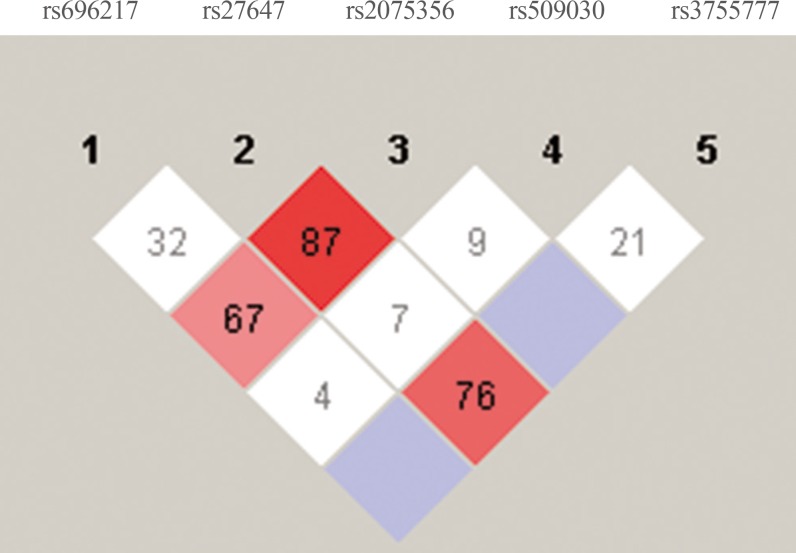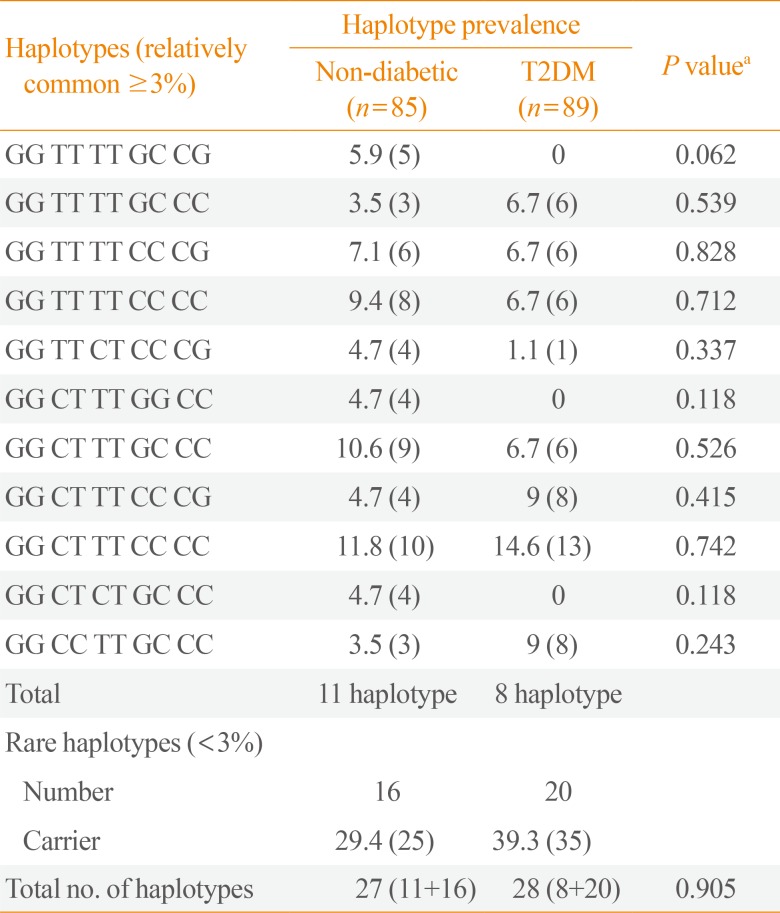1. Kojima M, Hosoda H, Date Y, Nakazato M, Matsuo H, Kangawa K. Ghrelin is a growth-hormone-releasing acylated peptide from stomach. Nature. 1999; 402:656–660. PMID:
10604470.

2. Tschop M, Smiley DL, Heiman ML. Ghrelin induces adiposity in rodents. Nature. 2000; 407:908–913. PMID:
11057670.

3. Lopez M, Lage R, Saha AK, Perez-Tilve D, Vazquez MJ, Varela L, et al. Hypothalamic fatty acid metabolism mediates the orexigenic action of ghrelin. Cell Metab. 2008; 7:389–399. PMID:
18460330.
4. Poykko SM, Kellokoski E, Horkko S, Kauma H, Kesaniemi YA, Ukkola O. Low plasma ghrelin is associated with insulin resistance, hypertension, and the prevalence of type 2 diabetes. Diabetes. 2003; 52:2546–2553. PMID:
14514639.
5. Leite-Moreira AF, Soares JB. Physiological, pathological and potential therapeutic roles of ghrelin. Drug Discov Today. 2007; 12:276–288. PMID:
17395087.

6. Grundy SM. Atherogenic dyslipidemia associated with metabolic syndrome and insulin resistance. Clin Cornerstone. 2006; 8(Suppl 1):S21–S27. PMID:
16903166.

7. Grundy SM. Metabolic syndrome: connecting and reconciling cardiovascular and diabetes worlds. J Am Coll Cardiol. 2006; 47:1093–1100. PMID:
16545636.

8. Wajnrajch MP, Ten IS, Gertner JM, Leibel RL. Genomic organization of the human GHRELIN gene. J Endocr Genet. 2000; 1:231–233.

9. Davenport AP, Bonner TI, Foord SM, Harmar AJ, Neubig RR, Pin JP, et al. International Union of Pharmacology. LVI. Ghrelin receptor nomenclature, distribution, and function. Pharmacol Rev. 2005; 57:541–546. PMID:
16382107.

10. Al Qarni AA, Joatar FE, Das N, Awad M, Eltayeb M, Al-Zubair AG, et al. Association of plasma ghrelin levels with insulin resistance in type 2 diabetes mellitus among Saudi subjects. Endocrinol Metab (Seoul). 2017; 32:230–240. PMID:
28555463.

11. Dezaki K, Sone H, Yada T. Ghrelin is a physiological regulator of insulin release in pancreatic islets and glucose homeostasis. Pharmacol Ther. 2008; 118:239–249. PMID:
18433874.

12. Yada T, Dezaki K, Sone H, Koizumi M, Damdindorj B, Nakata M, et al. Ghrelin regulates insulin release and glycemia: physiological role and therapeutic potential. Curr Diabetes Rev. 2008; 4:18–23. PMID:
18220691.

13. Pacifico L, Poggiogalle E, Costantino F, Anania C, Ferraro F, Chiarelli F, et al. Acylated and nonacylated ghrelin levels and their associations with insulin resistance in obese and normal weight children with metabolic syndrome. Eur J Endocrinol. 2009; 161:861–870. PMID:
19773372.

14. Mager U, Kolehmainen M, Lindstrom J, Eriksson JG, Valle TT, Hamalainen H, et al. Association between ghrelin gene variations and blood pressure in subjects with impaired glucose tolerance. Am J Hypertens. 2006; 19:920–926. PMID:
16942934.

15. Takezawa J, Yamada K, Morita A, Aiba N, Watanabe S. Preproghrelin gene polymorphisms in obese Japanese: association with diabetes mellitus in men and with metabolic syndrome parameters in women. Obes Res Clin Pract. 2009; 3:179–191. PMID:
24973147.

16. Zavarella S, Petrone A, Zampetti S, Gueorguiev M, Spoletini M, Mein CA, et al. A new variation in the promoter region, the -604 C>T, and the Leu72Met polymorphism of the ghrelin gene are associated with protection to insulin resistance. Int J Obes (Lond). 2008; 32:663–668. PMID:
18071345.
17. Liu J, Liu J, Tian LM, Liu JX, Bing YJ, Zhang JP, et al. Association of ghrelin Leu72Met polymorphism with type 2 diabetes mellitus in Chinese population. Gene. 2012; 504:309–312. PMID:
22441120.

18. Hedayatizadeh-Omran A, Rafiei A, Khajavi R, Alizadeh-Navaei R, Mokhberi V, Moradzadeh K. Association between ghrelin gene (Leu72Met) polymorphism and ghrelin serum level with coronary artery diseases. DNA Cell Biol. 2014; 33:95–101. PMID:
24341728.

19. Alberti KG, Zimmet PZ. Definition, diagnosis and classification of diabetes mellitus and its complications. Part 1: diagnosis and classification of diabetes mellitus provisional report of a WHO consultation. Diabet Med. 1998; 15:539–553. PMID:
9686693.

20. Matthews DR, Hosker JP, Rudenski AS, Naylor BA, Treacher DF, Turner RC. Homeostasis model assessment: insulin resistance and beta-cell function from fasting plasma glucose and insulin concentrations in man. Diabetologia. 1985; 28:412–419. PMID:
3899825.
21. Prudom C, Liu J, Patrie J, Gaylinn BD, Foster-Schubert KE, Cummings DE, et al. Comparison of competitive radioimmunoassays and two-site sandwich assays for the measurement and interpretation of plasma ghrelin levels. J Clin Endocrinol Metab. 2010; 95:2351–2358. PMID:
20194708.

22. Finan RR, Mustafa FE, Al-Zaman I, Madan S, Issa AA, Almawi WY. STAT3 polymorphisms linked with idiopathic recurrent miscarriages. Am J Reprod Immunol. 2010; 63:22–27. PMID:
20059466.
23. Weyer C, Bogardus C, Mott DM, Pratley RE. The natural history of insulin secretory dysfunction and insulin resistance in the pathogenesis of type 2 diabetes mellitus. J Clin Invest. 1999; 104:787–794. PMID:
10491414.

24. Ma ZA, Zhao Z, Turk J. Mitochondrial dysfunction and β-cell failure in type 2 diabetes mellitus. Exp Diabetes Res. 2012; 2012:703538. PMID:
22110477.
25. Steinle NI, Pollin TI, O’Connell JR, Mitchell BD, Shuldiner AR. Variants in the ghrelin gene are associated with metabolic syndrome in the Old Order Amish. J Clin Endocrinol Metab. 2005; 90:6672–6677. PMID:
16204371.

26. Takezawa J, Yamada K, Miyachi M, Morita A, Aiba N, Sasaki S, et al. Preproghrelin gene polymorphisms in obese Japanese women. Minor homozygotes are light eaters, do not prefer protein or fat, and apparently have a poor appetite. Appetite. 2013; 63:105–111. PMID:
23257630.

27. Zhuang L, Li M, Yu C, Li C, Zhao M, Lu M, et al. The Leu72Met polymorphism of the GHRL gene prevents the development of diabetic nephropathy in Chinese patients with type 2 diabetes mellitus. Mol Cell Biochem. 2014; 387:19–25. PMID:
24132517.

28. Wu IC, Zhao Y, Zhai R, Liu G, Ter-Minassian M, Asomaning K, et al. Association between polymorphisms in cancer-related genes and early onset of esophageal adenocarcinoma. Neoplasia. 2011; 13:386–392. PMID:
21472143.

29. Ando T, Komaki G, Naruo T, Okabe K, Takii M, Kawai K, et al. Possible role of preproghrelin gene polymorphisms in susceptibility to bulimia nervosa. Am J Med Genet B Neuropsychiatr Genet. 2006; 141B:929–934. PMID:
16921495.

30. Larsen LH, Gjesing AP, Sorensen TI, Hamid YH, Echwald SM, Toubro S, et al. Mutation analysis of the preproghrelin gene: no association with obesity and type 2 diabetes. Clin Biochem. 2005; 38:420–424. PMID:
15820771.

31. Kim SY, Jo DS, Hwang PH, Park JH, Park SK, Yi HK, et al. Preproghrelin Leu72Met polymorphism is not associated with type 2 diabetes mellitus. Metabolism. 2006; 55:366–370. PMID:
16483881.

32. Garcia EA, King P, Sidhu K, Ohgusu H, Walley A, Lecoeur C, et al. The role of ghrelin and ghrelin-receptor gene variants and promoter activity in type 2 diabetes. Eur J Endocrinol. 2009; 161:307–315. PMID:
19460888.

33. Zou CC, Huang K, Liang L, Zhao ZY. Polymorphisms of the ghrelin/obestatin gene and ghrelin levels in Chinese children with short stature. Clin Endocrinol (Oxf). 2008; 69:99–104. PMID:
18182091.

34. Gueorguiev M, Lecoeur C, Meyre D, Benzinou M, Mein CA, Hinney A, et al. Association studies on ghrelin and ghrelin receptor gene polymorphisms with obesity. Obesity (Silver Spring). 2009; 17:745–754. PMID:
19165163.

35. Berthold HK, Giannakidou E, Krone W, Tregouet DA, Gouni-Berthold I. Influence of ghrelin gene polymorphisms on hypertension and atherosclerotic disease. Hypertens Res. 2010; 33:155–160. PMID:
20010782.

36. Campa D, Pardini B, Naccarati A, Vodickova L, Novotny J, Steinke V, et al. Polymorphisms of genes coding for ghrelin and its receptor in relation to colorectal cancer risk: a two-step gene-wide case-control study. BMC Gastroenterol. 2010; 10:112. PMID:
20920174.

37. Pabalan NA, Seim I, Jarjanazi H, Chopin LK. Associations between ghrelin and ghrelin receptor polymorphisms and cancer in Caucasian populations: a meta-analysis. BMC Genet. 2014; 15:118. PMID:
25376984.

38. Choi HJ, Cho YM, Moon MK, Choi HH, Shin HD, Jang HC, et al. Polymorphisms in the ghrelin gene are associated with serum high-density lipoprotein cholesterol level and not with type 2 diabetes mellitus in Koreans. J Clin Endocrinol Metab. 2006; 91:4657–4663. PMID:
16954159.

39. Li WJ, Zhen YS, Sun K, Xue H, Song XD, Wang YB, et al. Ghrelin receptor gene polymorphisms are associated with female metabolic syndrome in Chinese population. Chin Med J (Engl). 2008; 121:1666–1669. PMID:
19024096.

40. Liao N, Xie ZK, Huang J, Xie ZF. Association between the ghrelin Leu72Met polymorphism and type 2 diabetes risk: a meta-analysis. Gene. 2013; 517:179–183. PMID:
23321590.












 PDF
PDF ePub
ePub Citation
Citation Print
Print



 XML Download
XML Download